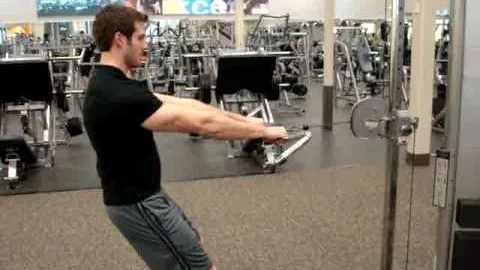
If you're looking to build a stronger and more defined back, the standing cable row exercise might just be the perfect addition to your workout routine. This exercise primarily targets the muscles of your upper back, but also engages the shoulders, biceps, and core. In this comprehensive guide, we will walk you through the correct form, benefits, variations, and proper execution of the standing cable row exercise.
The standing cable row exercise offers a wide range of benefits, making it an invaluable addition to any strength training regimen. Here are some of the key advantages:
To maximize the benefits of the standing cable row and prevent injuries, it is crucial to maintain the correct form. Follow these steps to ensure proper execution:
To add variety to your workout routine and target different areas of your back, try these variations of the standing cable row:
To ensure safety and optimize your workout experience, keep the following tips in mind:
Incorporating the standing cable row into your workout routine can lead to a stronger, more defined back, improved posture, and enhanced overall upper body functionality. By following the correct form, experimenting with variations, and considering safety precautions, you can optimize the benefits of this exercise. Remember to start slowly and gradually increase your weights to avoid injury. So, get ready to row your way to a powerful and well-developed back.
If you're looking for a gym, fitness club or yoga studio, you've come to the right place.
You can find information about gyms in your area. Browse catalog of gyms and find gyms with classes which are you looking for.
On gym page you can find simple information like address, phone or website. You can find list of available classes. You can check availability of personal training or small group classes. On place page you can also see information about open hours.
You can find gyms near you with amenities, courts, studios and equipments.
Use our map to find gym at your city or district.
In Gym Navigator you can find list of exercises with movies for many body parts.
You can browse exercises catalog and find exercises the best of you.
You can also find exercises grouped into workout plans, which you can use to improve you body. Each routine show you exercises one by one and give you possibility to count you progress and count down rest time.